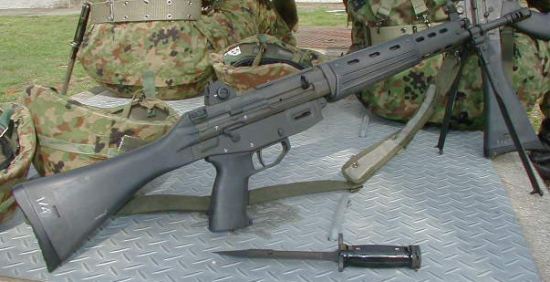



The Type I is a bolt-action rifle with a five-round internal box magazine fed by stripper clips. In essence, the Type I is a Carcano rifle made to look like a Type 38 Arisaka, and as such, functions very similarly to both rifles although some characteristics from either the Carcano or Arisaka are not retained in the Type I. The total number of rifles produced over that timespan remains unclear the generally accepted figure is that 60,000 Type Is were produced, although the serial number range of the Type Is would suggest a total production of somewhere between 120,000 and 140,000 rifles. The contract for production was fulfilled in a year, with the rifles seeing use in a number of campaigns, most notably in the Philippines and at Kwajalein Atoll. Japanese inspectors gave final approval on the manufacturing of these rifles in Italy. A1234) Terni ended up producing the barrels for the weapon, after which they would be sent to one of the three manufacturing plants for completion. The rifle was produced from 1938 to 1939 by three arsenals, Fabbrica d’Armi Regio Esercito (or Gardone), Fabbrica d'Armi Pietro Beretta (or Beretta) and Fabbrica Nazionale d’Armi di Brescia (or FNA-B), in a number of 9,999 rifle blocks with serial numbers prefaced with a letter from A to L (i.e.

The weapon was designed by Fabbrica d'Armi Terni (or Terni) in 1938 the resulting rifle was designated the "Type I" (with "I" being the first phonetic in "Italia"). As such, the Navy approached their new ally to produce rifles for their use a contract was then signed and a delegation sent to Italy to oversee production of a rifle comparable to that of the Type 38 rifle used by the Army. Luckily for the Navy, Italy joined the Anti-Comintern Pact that year. It was because of this that the Navy (which procured small arms independently of the Army) was heavily lacking in arms production, so they sought to secure arms from outside sources. Following what was known as the Marco Polo Bridge Incident in 1937, the Imperial Japanese Army invaded China and strained manufacturing heavily as the war was going on, priority for firearms manufacture was given to the Army, with other organizations such as the Imperial Japanese Navy not given such luxury.


 0 kommentar(er)
0 kommentar(er)
